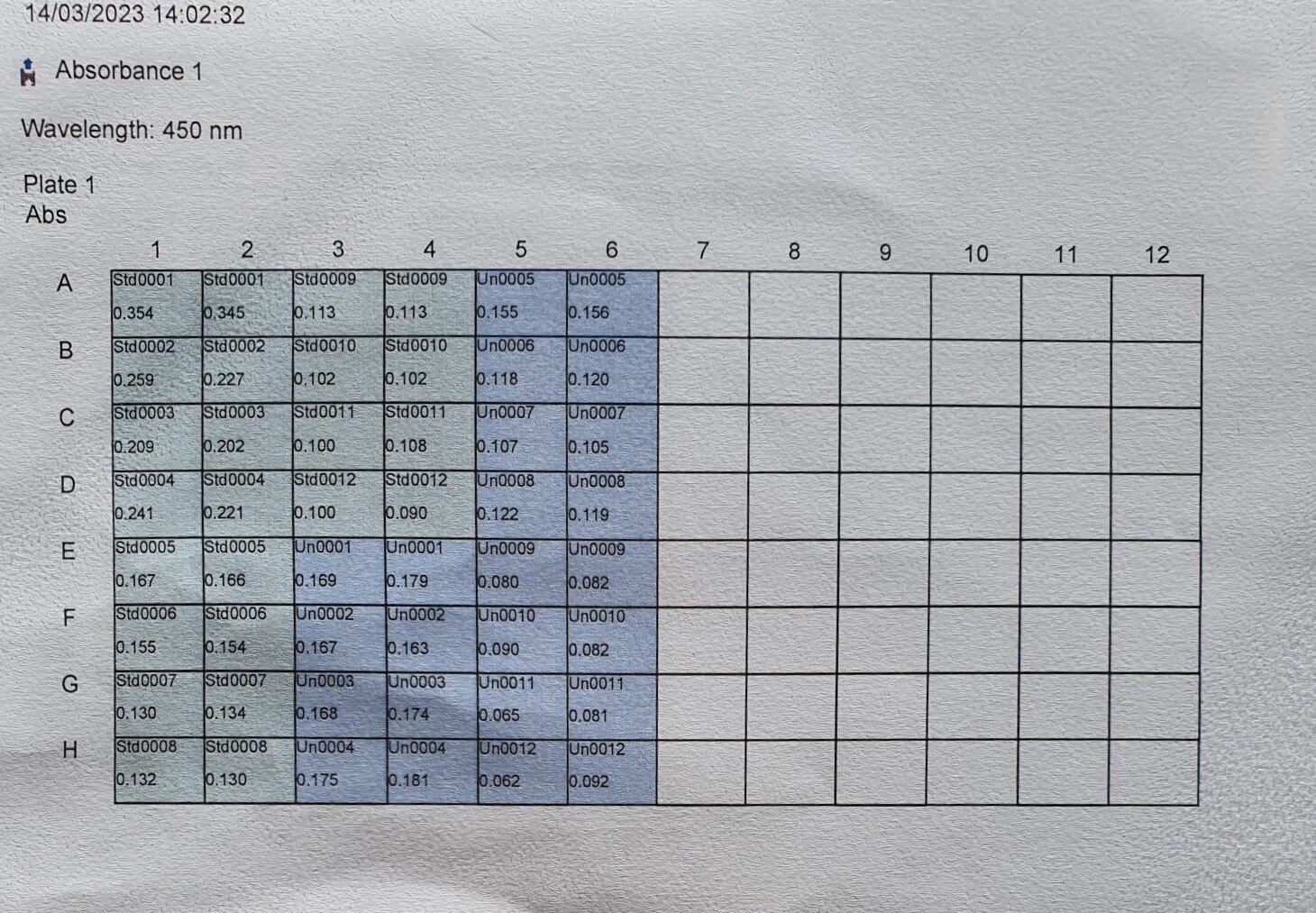Recombinant Human 4-1BB/TNFRSF9 His-tag Protein, CF
Recombinant Human 4-1BB/TNFRSF9 His-tag Protein, CF Summary
Product Specifications
Leu24-His183, with a C-terminal 6-His tag
Analysis
Product Datasheets
Carrier Free
CF stands for Carrier Free (CF). We typically add Bovine Serum Albumin (BSA) as a carrier protein to our recombinant proteins. Adding a carrier protein enhances protein stability, increases shelf-life, and allows the recombinant protein to be stored at a more dilute concentration. The carrier free version does not contain BSA.
In general, we advise purchasing the recombinant protein with BSA for use in cell or tissue culture, or as an ELISA standard. In contrast, the carrier free protein is recommended for applications, in which the presence of BSA could interfere.
9220-4B
| Formulation | Lyophilized from a 0.2 μm filtered solution in PBS. |
| Reconstitution | Reconstitute at 500 μg/mL in PBS. |
| Shipping | The product is shipped with polar packs. Upon receipt, store it immediately at the temperature recommended below. |
| Stability & Storage: | Use a manual defrost freezer and avoid repeated freeze-thaw cycles.
|
Scientific Data
 View Larger
View Larger
Recombinant Human 4-1BB/TNFRSF9 (Catalog # 9220-4B) has a molecular weight (MW) of 21.8 kDa as analyzed by SEC-MALS, suggesting that this protein is a monomer. MW may differ from predicted MW due to post-translational modifications (PTMs) present (i.e. Glycosylation).
 View Larger
View Larger
When Recombinant Human 4-1BB/TNFRSF9 (Catalog # 9220-4B) is coated at 50 ng/mL, Recombinant Human 4-1BB Ligand/TNFSF9 Recombinant Human 4-1BB Ligand/ TNFSF9 (Catalog # 2295-4L) binds with a ED50 of 2.5-15 ng/mL.
Reconstitution Calculator
Background: 4-1BB/TNFRSF9/CD137
4-1BB, also known as CD137 and TNFRSF9, is an approximately 30 kDa transmembrane glycoprotein in the TNF receptor superfamily. 4-1BB functions in the development and activation of multiple immune cells (1). Mature human 4-1BB consists of a 163 amino acid (aa) extracellular domain (ECD) with four TNFR cysteine-rich repeats, a 27 aa transmembrane segment, and a 42 aa cytoplasmic domain (2, 3). Within the ECD, human 4-1BB shares 60% aa sequence identity with mouse and rat 4-1BB. 4-1BB is expressed as a disulfide-linked homodimer on various populations of activated T cell including CD4+, CD8+, memory CD8+, NKT, and regulatory T cells (4-7) as well as on myeloid and mast cell progenitors, dendritic cells, mast cells, and bacterially infected osteoblasts (8-11). It binds with high affinity to the transmembrane 4-1BB Ligand/TNFSF9 which is expressed on antigen presenting cells and myeloid progenitor cells (3, 8). This interaction costimulates the proliferation, activation, and/or survival of the 4-1BB expressing cell (3-7). It can also enhance the activation-induced cell death of repetitively stimulated T cells (3). Mice lacking 4-1BB show augmented T cell activation, perhaps due to its absence on regulatory T cells (12). 4-1BB can associate with OX40 on activated T cells, forming a complex that responds to either ligand and inhibits Treg and CD8+ T cell proliferation (13). Reverse signaling through 4-1BB Ligand inhibits the development of dendritic cells, B cells, and osteoclasts (8, 11) but supports mature dendritic cell survival and costimulates the proliferation and activation of mast cells (9, 10).
4-1BB activation enhances CD8+ T cell and NK cell mediated anti-tumor immunity (14). It also contributes to the development of inflammation in high fat diet-induced metabolic syndrome (15). Soluble forms of 4-1BB and 4-1BB Ligand circulate at elevated levels in the serum of rheumatoid arthritis and hematologic cancer patients, respectively (16, 17).
- Wang, C. et al. (2009) Immunol. Rev. 229:192.
- Schwarz, H. et al. (1993) Gene 134:295.
- Alderson, M.R. et al. (1994) Eur. J. Immunol. 24:2219.
- Wen, T. et al. (2002) J. Immunol. 168:4897.
- Pulle, G. et al. (2006) J. Immunol. 176:2739.
- Zheng, G. et al. (2004) J. Immunol. 173:2428.
- Kim, D. et al. (2008) J. Immunol. 180:2062.
- Lee, S. et al. (2008) Nat. Immunol. 9:917.
- Choi, B.K. et al. (2009) J. Immunol. 182:4107.
- Nishimoto, H. et al. (2005) Blood 106:4241.
- Saito, K. et al. (2004) J. Biol. Chem. 279:13555.
- Lee, S. et al. (2005) J. Immunol. 174:6803.
- Ma, B.Y. et al. (2005) Blood 106:2002.
- Choi, B.K. et al. (2010) J. Immunol. 185:1404.
- Kim, C. et al. (2011) Diabetes 60:3159.
- Michel, J. et al. (1998) Eur. J. Immunol. 28:290.
- Salih, H.R. et al. (2001) J. Immunol. 167:4059.
Citation for Recombinant Human 4-1BB/TNFRSF9 His-tag Protein, CF
R&D Systems personnel manually curate a database that contains references using R&D Systems products. The data collected includes not only links to publications in PubMed, but also provides information about sample types, species, and experimental conditions.
1 Citation: Showing 1 - 1
-
A human CD137�PD-L1 bispecific antibody promotes anti-tumor immunity via context-dependent T cell costimulation and checkpoint blockade
Authors: C Geuijen, P Tacken, LC Wang, R Klooster, PF van Loo, J Zhou, A Mondal, YB Liu, A Kramer, T Condamine, A Volgina, LJA Hendriks, H van der Ma, E Rovers, S Engels, F Fransen, R den Blanke, V Zondag-van, A Basmeleh, W Bartelink, A Kulkarni, W Marissen, CY Huang, L Hall, S Harvey, S Kim, M Martinez, S O'Brien, E Moon, S Albelda, C Kanellopou, S Stewart, H Nastri, ABH Bakker, P Scherle, T Logtenberg, G Hollis, J de Kruif, R Huber, PA Mayes, M Throsby
Nature Communications, 2021-07-21;12(1):4445.
Species: Human
Sample Types: Recombinant Protein
Applications: Surface Plasmon Resonance
FAQs
No product specific FAQs exist for this product, however you may
View all Proteins and Enzyme FAQsReviews for Recombinant Human 4-1BB/TNFRSF9 His-tag Protein, CF
Average Rating: 4.5 (Based on 2 Reviews)
Have you used Recombinant Human 4-1BB/TNFRSF9 His-tag Protein, CF?
Submit a review and receive an Amazon gift card.
$25/€18/£15/$25CAN/¥75 Yuan/¥2500 Yen for a review with an image
$10/€7/£6/$10 CAD/¥70 Yuan/¥1110 Yen for a review without an image
Filter by:


